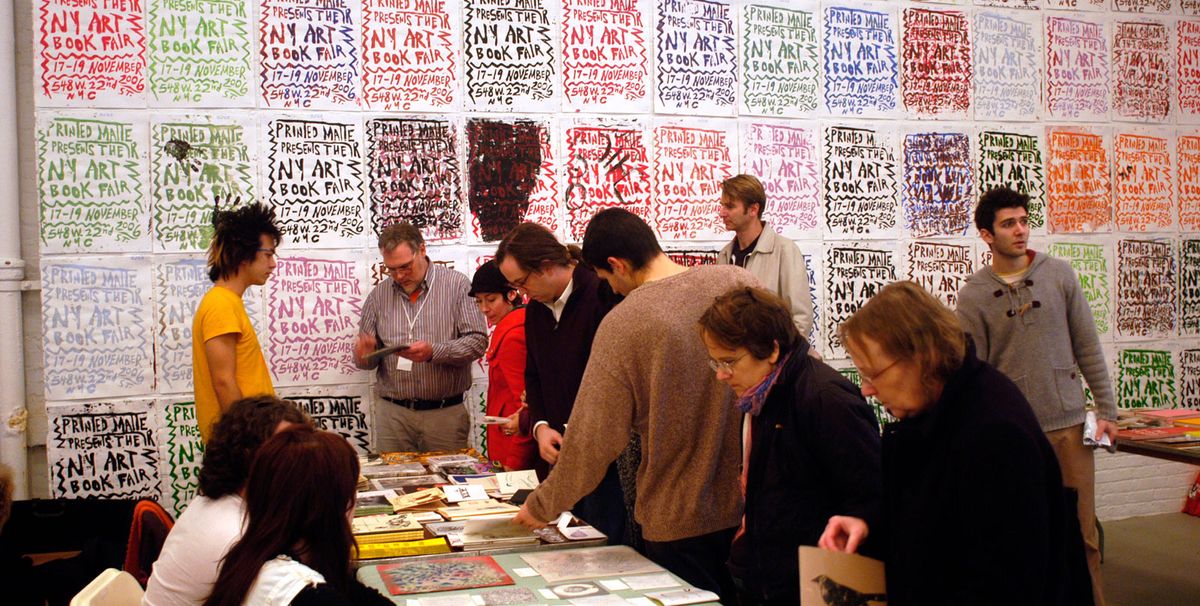In 1977, the American art critic Lucy Lippard famously called for artists’ books—those conceived and made by artists—to appear in “supermarkets, drugstores, and airports”. These books allowed artists to take control of their own production, to resist the constraints of an already rapidly commercialising art world. And so for Lippard, one of the founders in 1976 of New York distributor-publisher Printed Matter, they should be out in the world, read by the many, not the initiated few.
Lippard’s idealistic vision—by her own admission—failed. The content of artists’ books proved too avant-garde to break through to mass audiences, and their form continues to make them difficult to sell through the book trade. No spines, delicate finishes and wordless covers mean they are tricky to handle and place in chain bookshops, while small edition numbers ensure that wider—but more costly—distribution through traditional channels makes little sense.
Yet despite all this—and despite, too, the existential threat posed by digital communication and the availability of free online images of artists’ work—recent years have seen a rise in the quantity, quality and distribution of artists’ books. Where print runs for trade art books have seen steady declines since the 1990s (with the exception of the blockbuster exhibition catalogue), sales of artists’ books have stayed steady or risen. Much of this is down to the rise of specialist book fairs, pioneered by Printed Matter in 2005 with its New York Art Book Fair, still the most important international event for artists, booksellers and audiences, and now featuring 350 exhibitors. A multitude of other fairs has since opened around the world, from Paris to Mexico City, Dakar and Hong Kong.
Independent bookshops are playing an essential role, too, against what might have been annihilation in the face of the Amazon beast and decreasing space for art books on the high street. Established stores like Bookartbookshop and Artwords in London, Boekie Woekie in Amsterdam and Florence Loewy in Paris have been joined by newcomers such as Mast Books and Karma in New York, Type Books in Toronto and Tenderbooks in London. Buyers are a mix of established collectors and younger enthusiasts who, according to Tenderbooks’s Tamsin Clark, are knowledgeable and acquisitive. “Many of our customers are students or artists who are making similar work to what they might be buying,” Clark says. “It’s all part of a DIY culture of getting on and doing it, not waiting for the cultural gatekeepers to let you in but making the opportunities for yourself.”
New publishing studios, akin to artists’ collectives, have established new models of working
That DIY culture similarly lies behind the grassroots upsurge among producers and publishers. Established presses such as Bookworks, Printed Matter and Three Star Books are still going strong (at least creatively: funding and profitability are still a challenge), but young, dynamic publishers are emerging too, including Chose Commune in Paris and Dent-de-Leone in London. New publishing studios, akin to artists’ collectives—Atelier Éditions in Los Angeles and Conveyor Studio in New Jersey, among them—have established new models of working, publishing books by their artist-founders and friends, but also savvily offering studio-for-hire services to individual artists.
For Sonel Breslav, the founder of Blonde Art Books and now director of fairs and editions for Printed Matter, the internet has been the great facilitator in all this. “It’s no accident that there’s a correlation between the boom in artists’ books and the rise of social media,” she says. “Contrary to the belief that digital would dissolve this type of publishing, it has worked to its benefit, creating platforms for independent publishing and distribution models that didn’t exist before.” Artists can now find and connect with their (global) followers in ways that have never before been possible. “The audience has expanded,” she adds. “With artists’ books, you can watch your favourite artist produce something on Instagram, and then you can afford to buy it. You don’t need to live in a certain place to get access nowadays.”
The growth of the sector also attests to the continuing lure of the book as a space for an intimate, unmediated encounter with its maker. “Readers feel they’re having a personal, direct relationship with the artist who made the object in their hands,” says Tanya Peixoto of Bookartbookshop. “It’s a connection you don’t get elsewhere in modern life, where everything is mediated and processed. Buying an artist’s book is the equivalent of going to the farmer’s market and buying your organic apples direct from the grower.” In our mass-produced, commodified, ever-more homogenised world, it’s perhaps no wonder that artists and readers are turning in greater numbers to these individually crafted, uniquely collectable books.
• Jacky Klein is an art historian, publisher and broadcaster. The third edition of her book, Grayson Perry, will be published by Thames & Hudson in May


